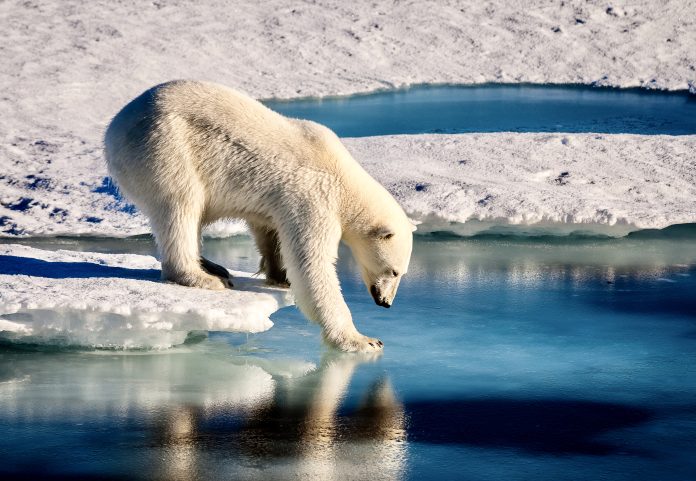The U.S. Fish and Wildlife Service (FWS) announced this week that it will conduct a five-year review of polar bear populations. Polar bears are federally protected under the Endangered Species Act, which requires FWS to review the status of the species periodically. The most recent review was conducted in 2017.
“Climate change is already jeopardizing the future of the polar bear,” said Director of Defenders of Wildlife’s Alaska Program Nicole Whittington-Evans, in a statement. “These assessments are critical to ensuring we have the appropriate level of protection under ESA.”
The purpose of a five-year review is to assess each threatened and endangered species to determine whether information gathered since the time of the species’ listing or last status review suggests that the species’ classification should be changed. Any change in federal status requires a separate rulemaking process that is open to public comment.
Climate change is the primary threat to polar bear survival. Sea ice cover this year was the second-lowest on record. For the Southern Beaufort Sea population which is found in the southern portion of the polar bear’s range, the loss of sea ice is significant and is considered the main cause of their population decline – from an estimated 1,800 polar bears in the late 1980s, to only 900 by 2010. This population is further threatened by oil development along the northern coast of Alaska, particularly with a congressionally-mandated oil leasing program for the coastal plain of the Arctic National Wildlife Refuge, a place that is vital to the bear’s reproductive success.
In 2017, FWS estimated the global population of polar bears at 26,000, noting that this number was certain to decline in the future along with sea ice.
Polar bears were listed as threatened under the Endangered Species Act (ESA) in May 2008. The ESA ensures that management activities by agencies are focused on protecting and recovering imperiled species and requires critical habitat designations.
Defenders of Wildlife advocated for the ESA listing and for the designation of critical habitat for polar bears. In 2010, more than 120 million acres were designated critical habitat, 96% of which is sea ice, and 4% is onshore. For Southern Beaufort Sea polar bears, that 4% is becoming more important as their sea ice habitat diminishes, especially for denning and raising cubs.


